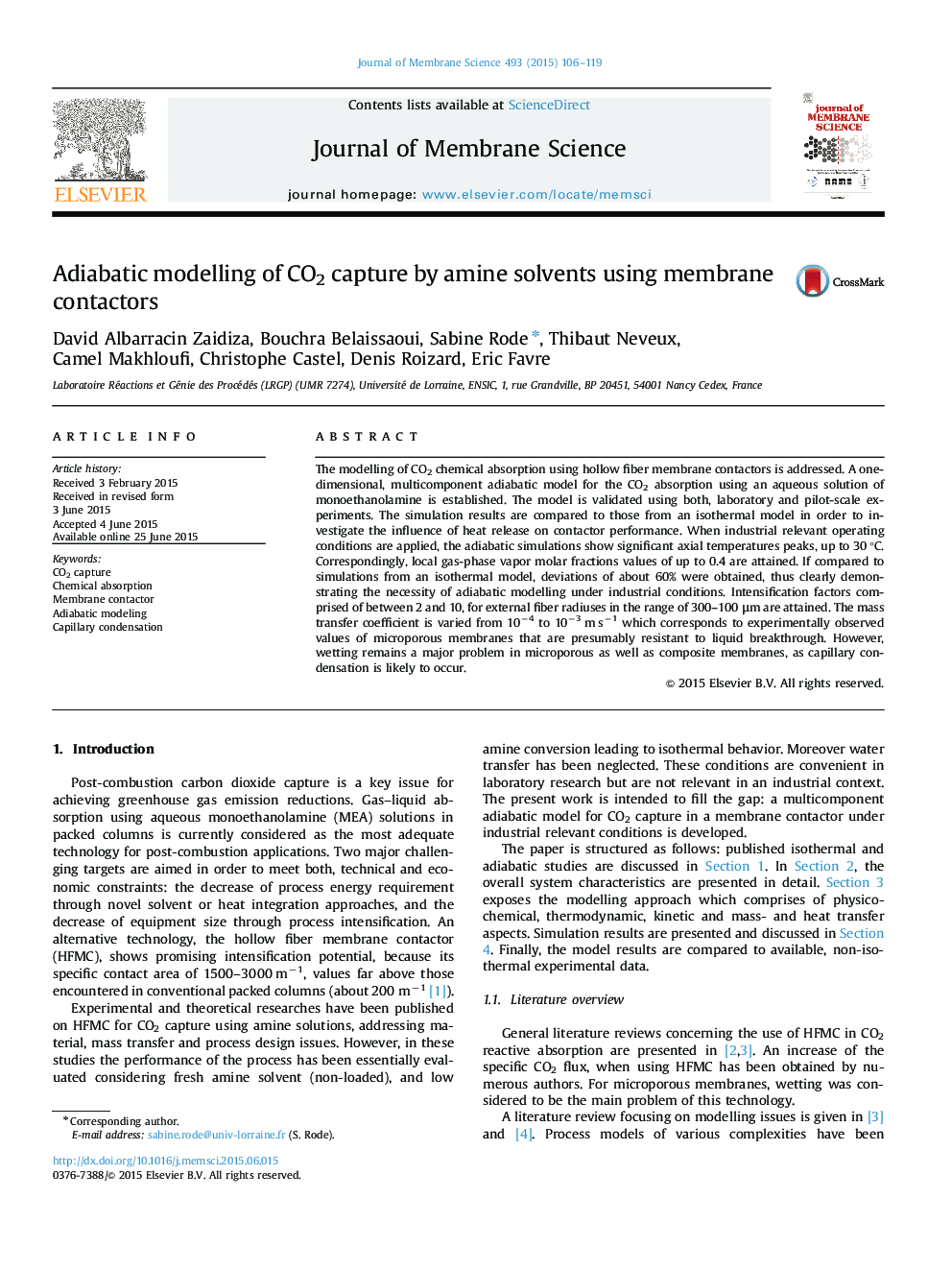| Article ID | Journal | Published Year | Pages | File Type |
|---|---|---|---|---|
| 7020961 | Journal of Membrane Science | 2015 | 14 Pages |
Abstract
The modelling of CO2 chemical absorption using hollow fiber membrane contactors is addressed. A one-dimensional, multicomponent adiabatic model for the CO2 absorption using an aqueous solution of monoethanolamine is established. The model is validated using both, laboratory and pilot-scale experiments. The simulation results are compared to those from an isothermal model in order to investigate the influence of heat release on contactor performance. When industrial relevant operating conditions are applied, the adiabatic simulations show significant axial temperatures peaks, up to 30 °C. Correspondingly, local gas-phase vapor molar fractions values of up to 0.4 are attained. If compared to simulations from an isothermal model, deviations of about 60% were obtained, thus clearly demonstrating the necessity of adiabatic modelling under industrial conditions. Intensification factors comprised of between 2 and 10, for external fiber radiuses in the range of 300-100 μm are attained. The mass transfer coefficient is varied from 10â4 to 10â3 m sâ1 which corresponds to experimentally observed values of microporous membranes that are presumably resistant to liquid breakthrough. However, wetting remains a major problem in microporous as well as composite membranes, as capillary condensation is likely to occur.
Related Topics
Physical Sciences and Engineering
Chemical Engineering
Filtration and Separation
Authors
David Albarracin Zaidiza, Bouchra Belaissaoui, Sabine Rode, Thibaut Neveux, Camel Makhloufi, Christophe Castel, Denis Roizard, Eric Favre,
